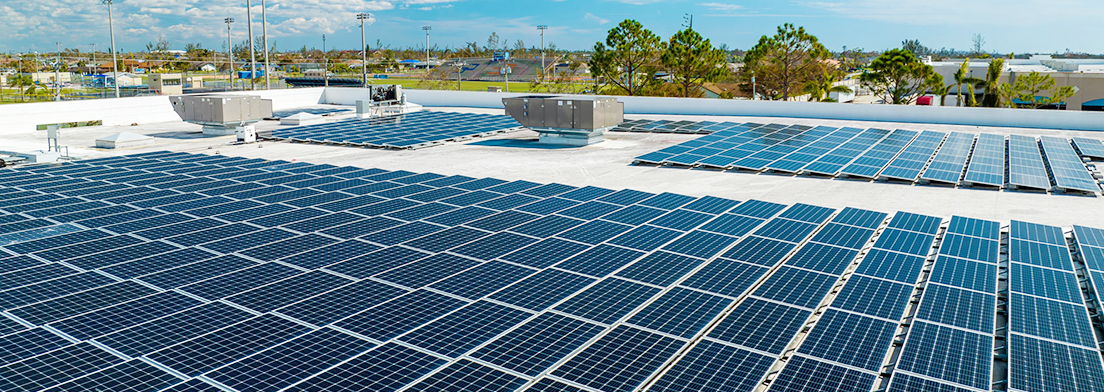When it comes to installing solar panels on a flat roof, there are some unique challenges and considerations compared to pitched roof installations. Flat roofs are often used in commercial buildings, apartment complexes, and even residential homes in some regions, providing an excellent opportunity to harness solar energy. However, to ensure optimal performance, safety, and durability, selecting the right solar mounting system and following best installation practices are key. In this post, we’ll walk through the various types of mounting systems for flat roofs, provide helpful installation tips, and highlight the key aspects that flat roof owners should keep in mind.
Solar mounting systems for flat roofs are designed to secure solar panels in place while maximizing their exposure to sunlight. Unlike traditional pitched roof systems, flat roof solar mounts are typically engineered to be flexible, with adjustable angles to capture the most sunlight throughout the day.
There are two primary types of solar mounting systems for flat roofs:
1. Ballasted Mounting Systems: These are weight-based systems that use heavy ballast (such as concrete blocks or gravel) to keep the solar panels in place without the need for penetrations into the roof. Ballasted systems are a great choice for roofs that need to remain waterproof.
2. Penetrating Mounting Systems: These systems involve drilling holes into the roof to install the mounting racks. They offer a more secure and permanent solution, but they may not be ideal for all flat roofs, especially those with roofing materials that are prone to leaks.
Assess the Roof’s Structural Integrity
Before installation, it’s critical to evaluate the structural integrity of the roof. Ensure the roof can handle the added weight of the solar panels and mounting system, especially for ballasted solutions. Consult with a structural engineer if necessary.
For penetrating mounts, check the roofing material's compatibility and ensure that the roof can handle the necessary penetrations without compromising its waterproofing.

Choose the Right Mounting System
Ballasted Mounts: If your flat roof is vulnerable to leaks, or you don’t want to puncture the roof, a ballasted system is a great option. They’re easy to install and require minimal maintenance, but make sure the ballast is correctly weighted to withstand strong winds.
Penetrating Mounts: If your roof allows for penetrations, a penetrating mounting system can provide more stability and is typically more cost-effective than a ballasted system. However, be cautious when installing to ensure the roof's integrity is not compromised.
Optimizing Panel Tilt
One of the key considerations for flat roof solar installations is the tilt angle. Solar panels on a flat roof usually need to be tilted to an optimal angle (typically between 10° and 30°) to maximize energy production.
Adjustable tilt mounting systems offer flexibility in adjusting the panel angle depending on your geographical location, seasonal variation, and roof orientation.
Proper Spacing and Layout
Adequate spacing between the solar panels and the roof is important for ventilation and heat dissipation. Ensure that there is enough air circulation to avoid overheating of the panels, which can reduce efficiency.
When laying out the panels, also consider the need for accessibility for maintenance and cleaning. Ensure there’s enough space between rows of panels for easy access.
Secure Fastening for Wind Resistance
One of the most important aspects of installing solar systems on flat roofs is ensuring that they are secured properly to withstand high winds. Whether you’re using ballasted or penetrating mounts, ensure the system is designed to resist wind uplift. In windy regions, it may be necessary to add extra ballast or use additional fasteners to secure the panels tightly.
Weatherproofing and Sealing
If you are using a penetrating mounting system, weatherproofing the penetrations is critical. Use high-quality sealants to prevent water infiltration that could damage the roof or cause leaks.
It’s important to inspect the roof before installation to make sure there are no pre-existing issues with leaks. If your roof has any signs of wear and tear, repair them before proceeding with the installation.
Avoid Roof Membrane Damage
Be mindful of the type of roof membrane your flat roof uses. Flat roofs are often covered with materials like TPO, EPDM, or modified bitumen, which can be damaged by heavy equipment or inappropriate fasteners. When drilling or installing mounts, ensure that the roof membrane is not punctured or compromised.
Professional Installation
While DIY solar installation can be an attractive option, it’s always recommended to hire professional installers for flat roof systems. Professionals have the experience and tools to safely and efficiently install your system, ensuring that the installation meets local building codes and manufacturer guidelines.
Regular Maintenance and Inspection
Flat roof solar panels can collect dust, debris, and snow in areas with harsh winters, so regular maintenance is important. Periodically check for any accumulated debris that could block the panels’ sunlight or cause wear on the mounting system.
Inspect the roof and mounting system for any signs of wear, leaks, or other issues that could impact performance.
Local Regulations and Permits
Always check local building codes and regulations before installing a solar system on a flat roof. Some regions may have specific requirements for weight distribution, wind load resistance, or roof penetrations.
A flat roof offers a fantastic opportunity to install a solar power system without compromising the aesthetics of your building. By choosing the right solar mounting system, ensuring proper installation, and following best practices, you can harness the full potential of solar energy while maximizing the durability and efficiency of your system. Whether you’re a commercial or residential property owner, flat roof solar panels can provide a cost-effective and sustainable energy solution for years to come.

 Xiamen TopFence Co.,Ltd.
Xiamen TopFence Co.,Ltd. No. 77, LingXia South Road, Huli District, Xiamen City, Fujian, China
No. 77, LingXia South Road, Huli District, Xiamen City, Fujian, China Tel: +8613365923720
Tel: +8613365923720
 Email: info@xmtopfence.com
Email: info@xmtopfence.com
 IPv6 network supported Sitemap
| XML
| Blog
| Privacy Policy
IPv6 network supported Sitemap
| XML
| Blog
| Privacy Policy


